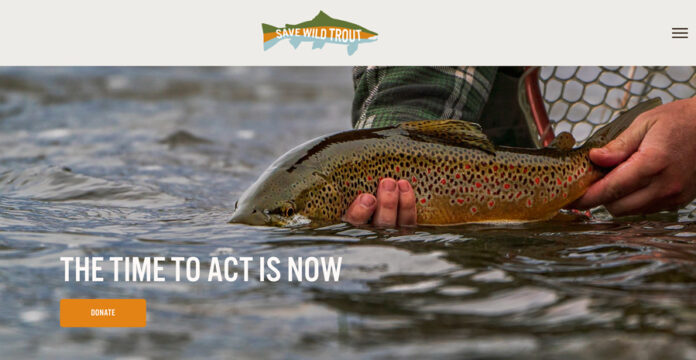Welcome to the latest installment of the Wednesday Wake-Up Call, a roundup of the most pressing conservation issues important to anglers. Working with our friends at Trout Unlimited, Backcountry Hunters & Anglers, the Theodore Roosevelt Conservation Partnership, The Everglades Foundation, Captains for Clean Water, VoteWater.org, and Conservation Hawks (among others), we’ll make sure you’ve got the information you need to understand the issues and form solid opinions.
1. New Organization Formed in Response to Montana Trout-Population Collapse
In response to the Jefferson Basin’s wild-trout population crash, a coalition of fly-fishing businesses, outfitters and guides, lodges, anglers, and advocates have formed and launched Save Wild Trout to address this ecological and economic emergency.
“The State’s inaction and lack of urgency has left us local business owners and impacted community members desperate for answers, so we’ve formed Save Wild Trout to bring private resources and expertise to work together to find science-based solutions to restoring our fisheries,” said Wade Fellin, co-owner of Big Hole Lodge. “This is an all-hands-on-deck moment for southwest Montana’s beloved and world renowned wild trout fisheries, and we can’t hold our breath hoping someone will step up, while population numbers and our businesses suffer. Working alongside federal, state, and local agencies and with the local, national, and international fly-fishing community, Save Wild Trout can work outside of the confines of bureaucracy in a complementary way.”
After a group of impacted guides, outfitters, fly-fishing businesses, and lodges sent a letter to Governor Gianforte requesting emergency assistance on May 30, 2023, and failed to receive a timely response with a plan of action, the group decided to fill the void left behind by lack of leadership and attention to the crisis. [The governor has since responded. See below–ed.]
Save Wild Trout will convene an independent, multi-disciplinary experts panel to study southwestern Montana’s trout-population collapse, identify causes, and propose solutions, including discrete legislative, regulatory, and/or policy reforms. Experts will commission a report presenting findings and recommendations to restore and conserve SW Montana’s wild trout fisheries, which will then provide the basis for targeted coalition advocacy.
Additionally Save Wild Trout will work to:
- Conserve wild trout habitat and work to protect wild trout habitat by advocating for policies that reduce pollution, improve water quality, and protect streamside land.
- Educate the public about the importance of wild trout and the threats they face. The organization will produce educational materials, host events, and work to raise awareness of challenges and wild trout conservation.
- Advocate for policies that support wild trout populations, working with policy-makers and decision-makers to enforce, develop and implement laws and regulations that protect wild trout habitat and promote sustainable fishing practices.
- Develop models, understanding, expertise, policy, and resources to replicate nationally.
These partners have already joined Save Wild Trout, and others can sign on through the website.
To learn more, visit www.savewildtrout.org
Related stories:
2. Restoring Seagrasses in Florida’s Indian River Lagoon
Since 2009, the Indian River Lagoon along Florida’s east coast has lost about 58% of its seagrasses, foundational habitat for the 150-mile Estuary of National Significance. Without that essential seagrass, the treasured lagoon faces a challenging future, but restoring the grass is a lot more complicated than just replanting it. That’s where Florida Oceanographic Society’s FOSTER program comes in.
FOSTER (Florida Oceanographic Seagrass Training, Education and Restoration) aims “to train volunteers to assist with seagrass monitoring and restoration while educating the public on issues facing seagrass.” Through the program, FOS is researching new and innovative ways to restore vital seagrass habitat while also engaging the public on the fragile nature of the effort. Threatened by Lake Okeechobee discharges, algal blooms, and poor water quality, seagrass in the lagoon is always vulnerable to loss events. That’s why FOS is working hard to identify the most effective, lasting seagrass restoration strategies while underscoring and advocating for the simultaneous need to fix the water-quality issues that threaten the seagrass and other habitat in the first place.
By reducing Lake Okeechobee discharges through efforts like Everglades restoration and by improving statewide water-quality through new legislation, we can ease the pressure on the seagrass. That’s where YOU can help! Learn more about the issues, get others involved, and be a VOICE for our waters!
Click here to learn more at floridaocean.org
Related stories:
3. Pebble Mine Company to Pay Shareholders Who Claim They Were Duped

The company behind the controversial Pebble Mine in Southwest Alaska has agreed to pay nearly $6.4 million to a group of shareholders who claim they were misled by corporate leaders.
Vancouver-based Northern Dynasty Minerals Ltd. reached the settlement with the named plaintiffs, according to documents filed last week in the U.S. District Court for the Eastern District of New York. . . .
At issue were revelations in recorded conversations released in 2020 that became known as the Pebble Tapes. In those conversations, which were recorded by an environmental organization working undercover, Northern Dynasty Chief Executive Officer Ron Thiessen and Tom Collier, then the Pebble Limited Partnership CEO, described a strategy of getting a relatively small mine plan through the permitting process and following up with a massive expansion. Additionally, the two men touted political connections that they said would ease permitting.
Click here to read more in the Alaska Beacon
Credit: Source link































